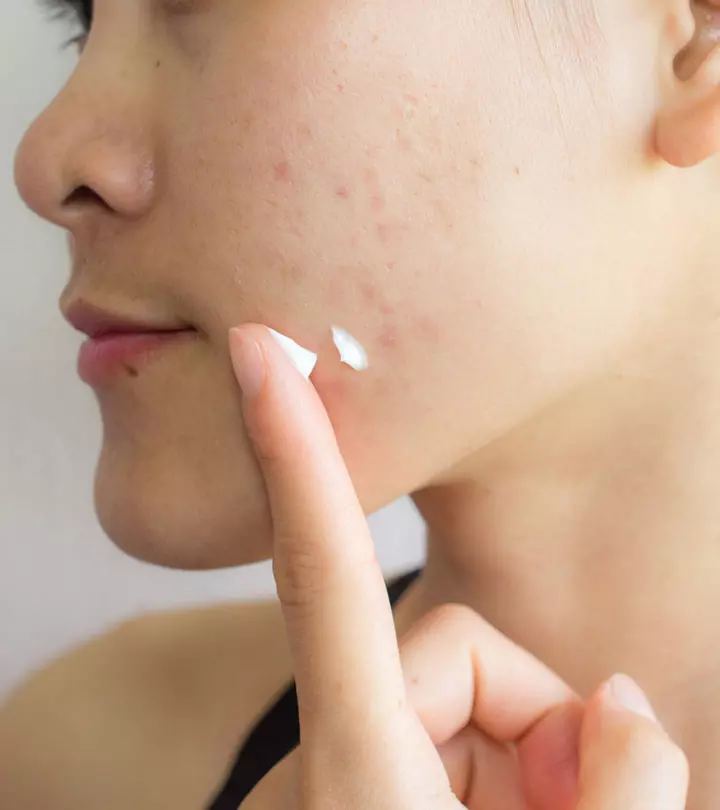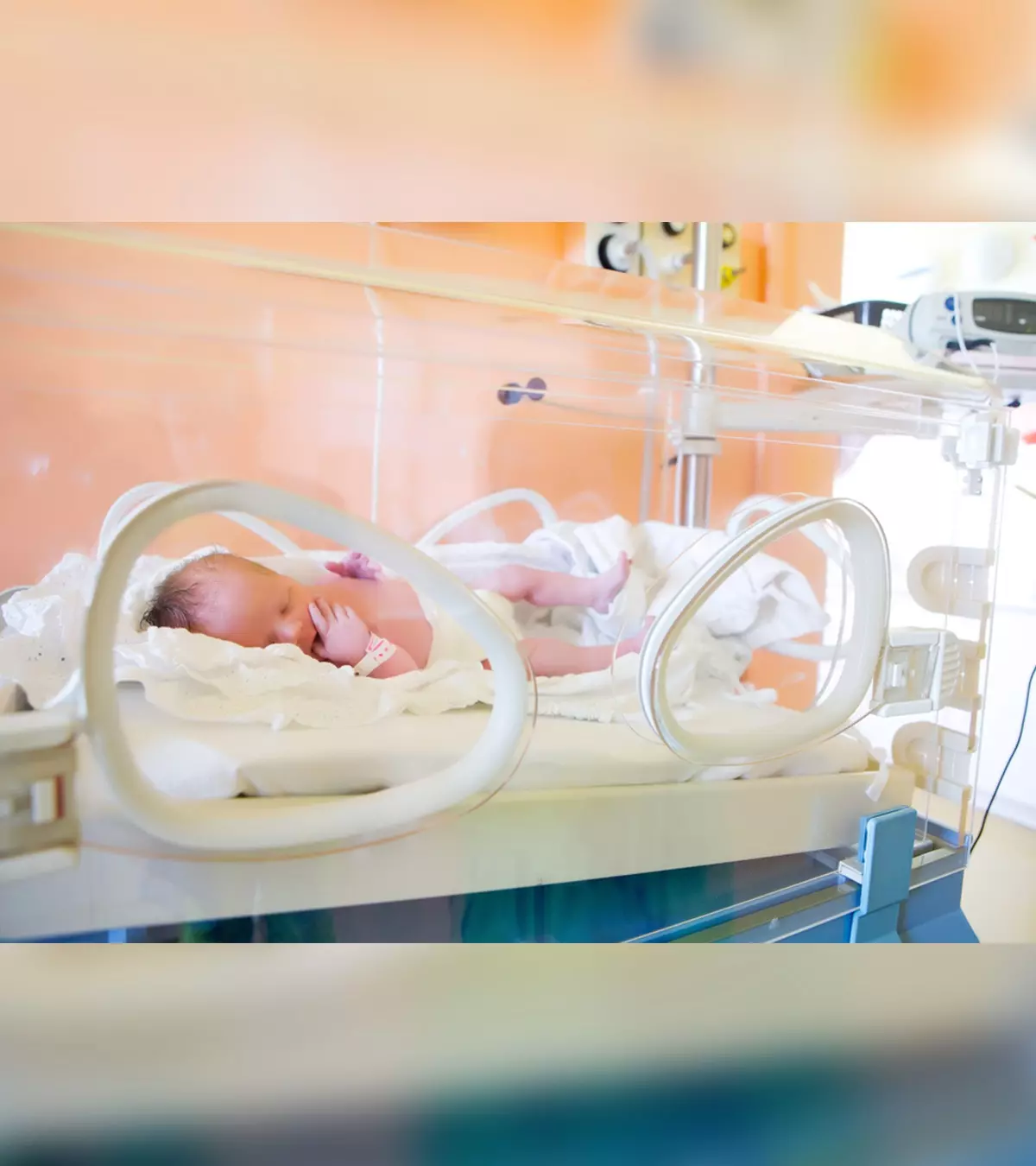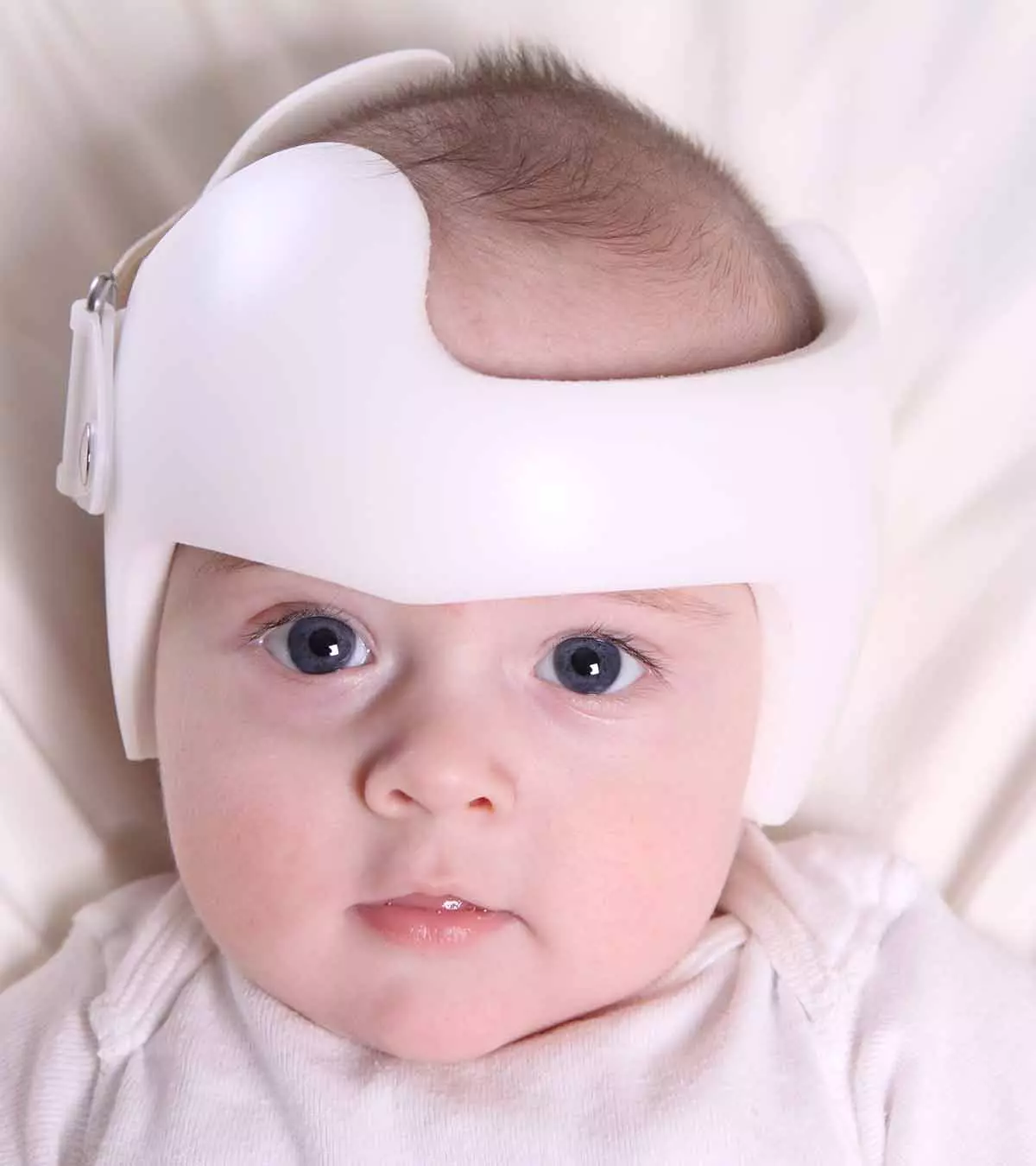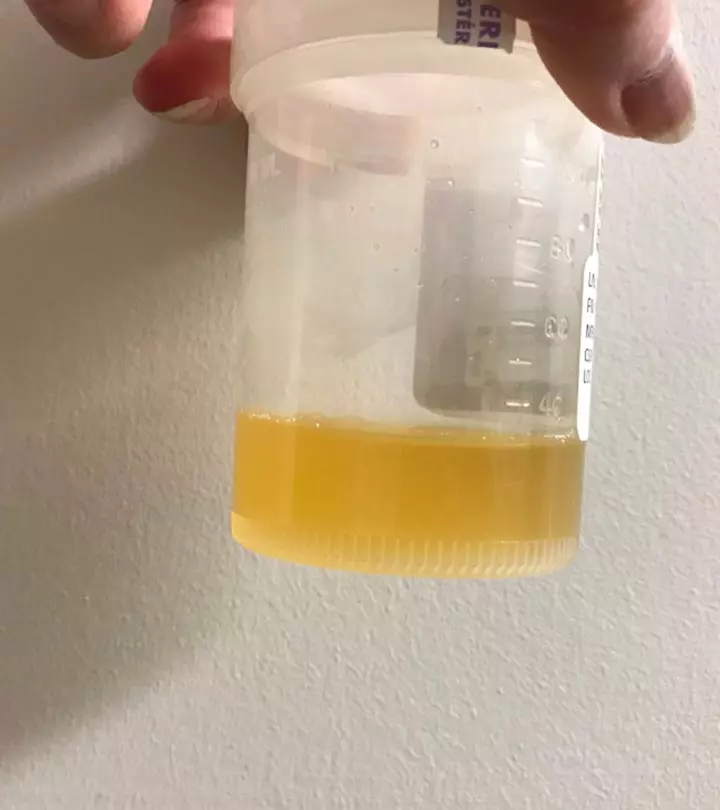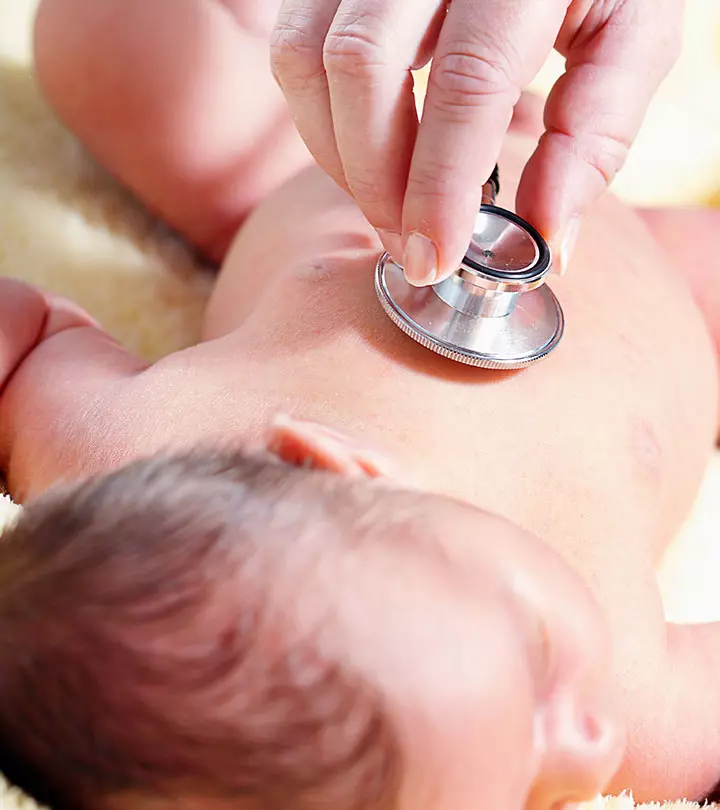
Image: ShutterStock
Beckwith-Wiedemann syndrome in babies is a congenital genetic disorder that affects around one in 15,000 births. The Genetic and Rare Diseases (GARD) Information Center estimates that the disease’s prevalence in the United States is below 50,000 people. It is detectable in babies at birth since they are born with the characteristic features of Beckwith-Wiedemann syndrome (BWS), such as an enlarged limb (called hemihypertrophy).
Some babies inherit this condition from their parents, while new genetic modifications could lead to BWS in some cases. However, early cancer screening and tailored intervention could help prevent future risks and complications in the baby.
Read this article to explore more about the signs and symptoms, causes, risks, diagnosis, treatment options, and long-term outlook of Beckwith-Wiedemann syndrome (BWS) in babies.
Key Pointers
- Beckwith-Wiedemann syndrome (BWS) is a congenital genetic disorder caused by changes in the expression of genes.
- Increased birth weight and length, enlarged tongue, abdominal wall defects are some symptoms of BWS in babies.
- Babies with this syndrome have an increased risk of childhood cancer, such as Wilms tumor and Hepatoblastoma.
- Regular screening of babies helps in detecting and treating cancer early.
- At present, there is no cure for BWS. The physical symptoms are corrected through surgeries such as pancreatectomy, abdominal wall repair, etc.
Signs And Symptoms Of BWS In Babies
The physical features of Beckwith-Wiedemann syndrome are part of the 11p overgrowth or 11p overgrowth spectrum. 11p overgrowth includes overgrowth and other features associated with genetic changes at the 11p region of chromosome 11. These features may include (1):
- Macrosomia is increased birth weight and length
- Hemihypertrophy or hemihyperplasia is an overgrowth of one side or part of the body
- Macroglossia is an enlarged tongue
- Hypoglycemia (low blood sugar) or prolonged neonatal hypoglycemia due to increased insulin levels (neonatal hyperinsulinism)
- Enlarged abdominal organs such as the liver, pancreas, and kidneys
- Abdominal wall defects such as omphalocele or umbilical hernia in babies where abdominal organs protrude outside the abdominal cavity
- Creases and pits on the earlobe or behind the ear
 Quick fact
Quick factBWS also includes symptoms related to other conditions such as Pseudohypoparathyroidism which is similar to neonatal hypoparathyroidism, a condition characterized by resistance to the parathyroid hormones, neonatal hypocalcemia, and neonatal hyperphosphatemia (1).
Additionally, BWS is also linked with symptoms related to neonatal hypothyroidism or low levels of thyroid hormone production (1). Early recognition of these symptoms is vital for prompt action to enhance the well-being of affected infants.
Causes Of BWS In Babies

Image: IStock
Several genetic factors are known to cause Beckwith-Wiedemann syndrome. Changes in gene expression of one or more genes on 11p15 regions on chromosome 11 can cause BWS. In some cases, BWS can be due to mutations of the CDKN1C gene on chromosome 11 (2).
BWS can be of two types depending on the cause (3).
- Sporadic Beckwith-Wiedemann syndrome and hemihypertrophy account for 85% of cases. These genetic changes occur sporadically without any inheritance. This can be due to improper inactivation of growth-suppressing genes or overexpression of genes encouraging growth. Sporadic BWS occurs without a family history, and there is no risk of having another child with the same condition.
- Inherited Beckwith-Wiedemann syndrome or isolated hemihypertrophy accounts for 10 to 15% of cases. Since it is hereditary, it is passed from parents to their children. There is a 50% chance of an affected parent passing this genetic abnormality to a child. Most hereditary cases are associated with CDKN1C mutation on chromosome 11. This condition can be passed to the next generation, and there is an increased risk of having another child with the syndrome.
The genetic changes may occur only in some cells, resulting in mosaicism. It means that some parts of the body have normal cells with normal gene expression on chromosome 11. This heterogeneity of gene expression is responsible for clinical features called 11p overgrowth.
Genetic counseling can provide families with information on the nature of BWS, its genetic causes, and its impact on future pregnancies.
Diagnosis Of BWS In Babies

Image: IStock
BWS can be diagnosed clinically by observing the physical features. However, genetic testing is often ordered to confirm the diagnosis since this can explain the cause.
Babies with hemihypertrophy require evaluation from geneticists since this can also be seen as an isolated anomaly or with BWS. Blood samples or tissue samples are collected for genetic testing.
 Did you know?
Did you know?Cancer Risks And Screening In BWS
Babies with Beckwith-Wiedemann syndrome and isolated hemihypertrophy may have an increased risk of developing certain childhood cancers. Approximately 5-10 percent cancer risk is estimated in children with BWS, but this may vary depending on the cause of BWS (3).
The following cancers are often associated with BWS in babies (3).
- Wilms tumor is kidney cancer, most commonly seen in BWS. Nearly 95% of Wilms tumors occur in babies with BWS before age seven.
- Hepatoblastoma is liver cancer and the second most common type of cancer associated with BWS or isolated hemihypertrophy. This cancer is usually present by two years of age.
- Other rare childhood cancers such as neuroblastoma (affect nerve cells), rhabdomyosarcoma (involves soft tissue such as skeletal muscle tissue), and adrenocortical carcinoma (affects the outer layer of adrenal glands) can also be associated with BWS.
Regular screening is recommended for babies with BWS until teenage to detect cancers as early as possible. The prognosis depends on the cancer spread since early detection and treatment can improve outcomes. Early detection may also reduce the need for chemotherapy and radiotherapy or may require low-dose therapies.
The following screening tests are usually recommended for babies with BWS.
- Abdominal ultrasound every three months until seven years of age. Images of the liver, kidneys, and other abdominal organs are obtained until four years since the risk for liver cancer declines beyond this age. The renal and adrenal glands ultrasound is obtained until seven years of age.

Image: Shutterstock
- Alpha-fetoprotein (AFP) levels in the blood are screened every three months until four years of age. This protein is released by immature or damaged liver cells, and higher levels indicate a risk of hepatoblastoma. AFP can be normally high in the newborn period, and it may decline later.
Babies with clinical features of BWS and negative genetic test results may also receive similar cancer surveillance and medical management as babies with positive genetic tests results.
Treatment For BWS In Babies
There is no cure for BWS in babies. The existing measures focus on treating symptoms and surgical correction of physical features. The following treatments are given according to the physical features of BWS in babies (4).
- Abdominal wall repair for umbilical hernia is usually done soon after birth.
- Hypoglycemia treatment and monitoring of glucose levels every six hours is done for the first few days of life.

Image: Shutterstock
- Pancreatectomy (surgical removal of the pancreas) may be considered if there is severe neonatal hypoglycemia.
- Maxillofacial surgery may be required to treat macroglossia. Speech-language therapists may be involved in the care of macroglossia since this may often cause feeding difficulties, speech difficulties, and drooling.
- Orthopedic surgeries to correct the leg lengths are done in later years if one leg is larger than the other. Special orthopedic shoes with adjusted heels are recommended until surgical repairs.
Doctors may give future follow-up plans with various medical specialists such as endocrinologists, orthopedists, plastic surgeons, and oncologists to evaluate and treat possible complications of BWS.
Outlook Of BWS
Most babies with BWS and isolated hemihypertrophy may grow up normally. Physical features may become less noticeable when the child grows and could often be corrected with subsequent surgeries. They may appear larger than their peers in early childhood, but their growth declines gradually.
Most babies with BWS tend to have normal growth and reduced cancer risk by adolescence. Most grow up to be adults with above-average height and normal intelligence and lifespan. BWS does not interfere with reproduction in the future.
Beckwith-Wiedemann syndrome in babies or BWS is a rare genetic condition that affects babies from birth. This syndrome is categorized under overgrowth syndromes, which can lead to various health challenges throughout childhood and beyond. It might be sporadic or inherited, depending on the underlying cause. While physical signs of the condition can be used to diagnose it, genetic testing is necessary to confirm the diagnosis and determine the etiology. Correction procedures and symptomatic therapy are the most common treatments. You might inquire with the pediatrician about improved healthcare plans and initiatives to help facilitate different therapies necessary for BWS. Parents should also seek genetic counseling to learn about the risks of having a second child with BWS.
Infographic: Facts About Beckwith-Wiedemann Syndrome
Beckwith-Wiedemann syndrome is a growth disorder that is more noticeable in childhood. Early management of symptoms helps improve the quality of life. Go through the infographic to learn some facts about Beckwith-Wiedemann syndrome that may help you make the right decisions for your child. Illustration: Momjunction Design Team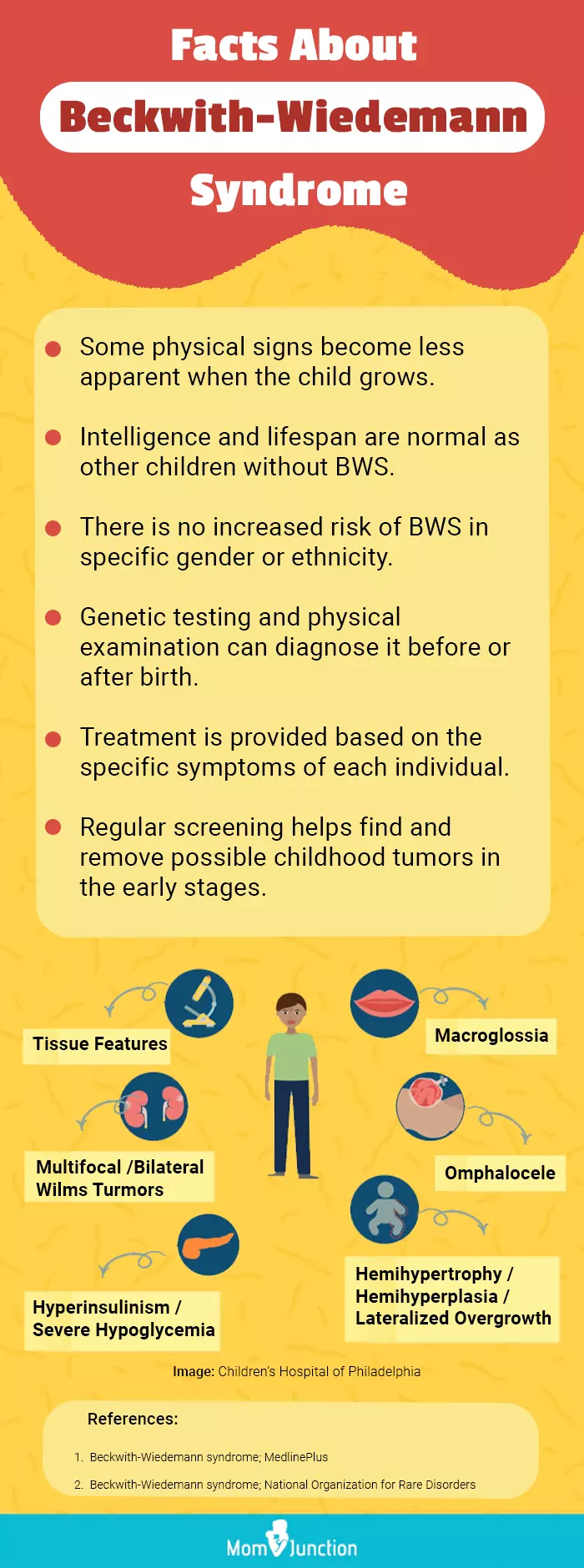
Frequently Asked Questions
1. Which is a common characteristic of Beckwith-Wiedemann syndrome?
The most common characteristics of BWS are macroglossia, stork bite, macrosomia, and ear creases or outer ear indentations (5).
2. Does Beckwith-Wiedemann syndrome cause mental retardation?
BWS may cause developmental and psychomotor delays in children with chromosomal anomalies, untreated hypoglycemia, and perinatal complications (6) (5).
3. Can genetic testing or counseling help families understand the risk of Beckwith-Wiedemann syndrome in future pregnancies?
Yes. Genetic counseling may help families understand the nature of the condition, including its causes, treatments, and other implications. It can also help parents learn the syndrome’s potential risks and the chances of its inheritance in future pregnancies (9).
4. Can Beckwith-Wiedemann syndrome be prevented in babies?
Beckwith-Wiedemann Syndrome in babies cannot be prevented, but an early diagnosis can be beneficial in developing effective treatment plans. In addition, genetic counseling can also assist parents in making informed decisions in subsequent pregnancies (8).
5. Can Beckwith Wiedemann syndrome be detected in the womb?
A few studies suggest that Beckwith Wiedemann can be provisionally diagnosed in the womb through ultrasound screening focused on the identification of specific features (10). However, this diagnostic approach is not commonly used to identify the disorder in pregnant women.
Illustration: Beckwith-Wiedemann Syndrome In Babies: Causes & Treatment
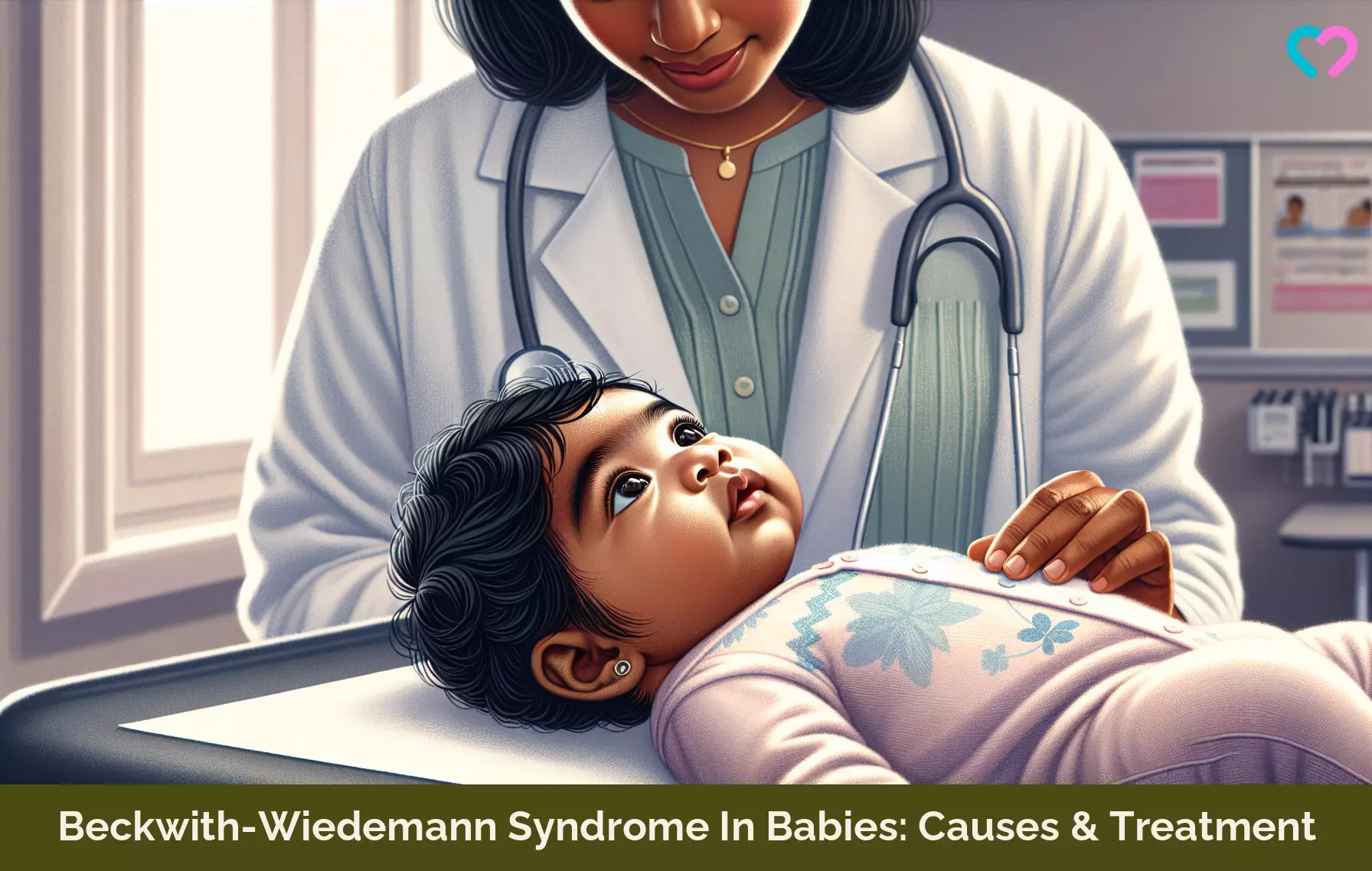
Image: Dall·E/MomJunction Design Team
Delve into the details of Beckwith-Wiedemann syndrome, its causes, effects, and effective treatment measures, explained by a registered doctor.
References
1. Beckwith-Wiedemann syndrome; National Institutes of Health (NIH)
2. Beckwith-Wiedemann syndrome; Cancer.Net
3. Beckwith-Wiedemann syndrome; Children’s Hospital of Philadelphia
4. Beckwith-Wiedemann syndrome; UCSF Benioff Children’s Hospital
5. Beckwith-Wiedemann syndrome; Cleveland Clinic
6. Donatella Milani et al. (2014).Beckwith–Wiedemann and IMAGe syndromes: two very different diseases caused by mutations on the same gene; NCBI
7. Beckwith-Wiedemann syndrome (BWS); NHS
8. Beckwith-Wiedemann syndrome; National Library of Medicine
9. Beckwith-Wiedemann syndrome; NCBI
10. Leda Paganini et al.; (2015) ; Beckwith–Wiedemann syndrome prenatal diagnosis by methylation analysis in chorionic villi; NCBI
Community Experiences
Join the conversation and become a part of our nurturing community! Share your stories, experiences, and insights to connect with fellow parents.
Read full bio of Dr. Arva M Bhavnagarwala
Read full bio of Dr Bisny T. Joseph
Read full bio of Rohit Garoo
Read full bio of Vidya Tadapatri












